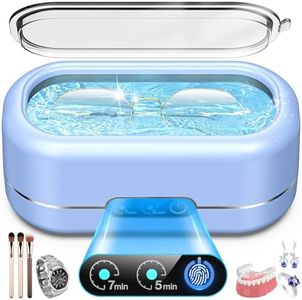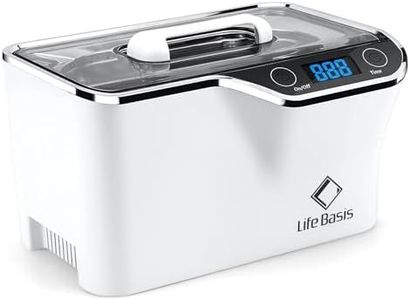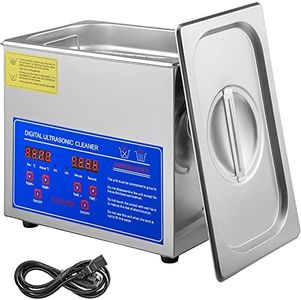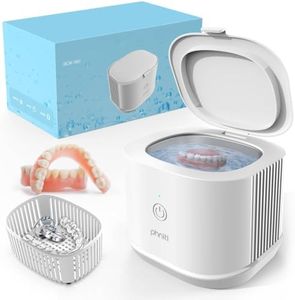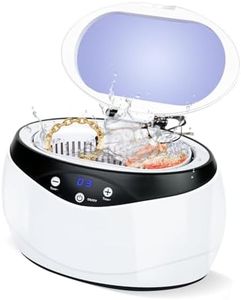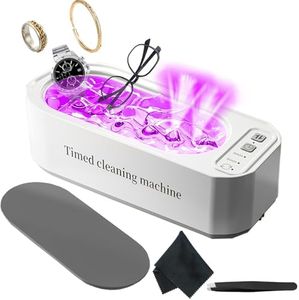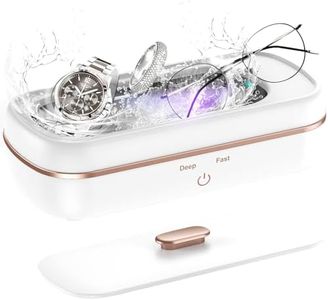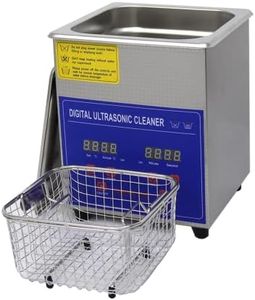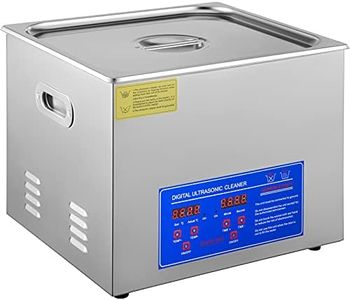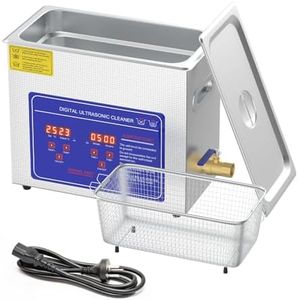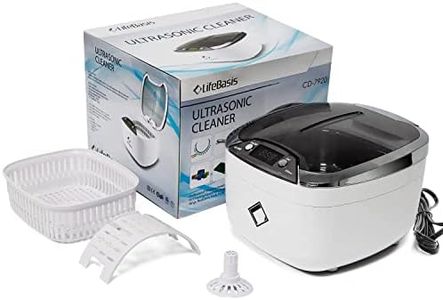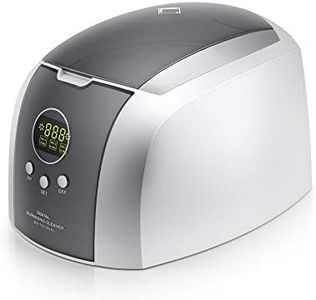We Use CookiesWe use cookies to enhance the security, performance,
functionality and for analytical and promotional activities. By continuing to browse this site you
are agreeing to our privacy policy
10 Best Ultrasonic Eyeglass Cleaners
From leading brands and best sellers available on the web.Buying Guide for the Best Ultrasonic Eyeglass Cleaners
When you're picking an ultrasonic cleaner for your eyeglasses, the goal is to find a machine that effectively removes dirt, smudges, and oils from the lenses and frames without causing any damage. Ultrasonic cleaners work by using high-frequency sound waves to create microscopic bubbles in a liquid, which gently lift debris from the surfaces of your glasses. To make the best choice, it's important to understand how the key features affect performance and convenience, and to match them to your personal cleaning habits, the size and number of glasses you have, and your preferences for maintenance and usability.Ultrasonic FrequencyThe ultrasonic frequency refers to how fast the sound waves vibrate in the cleaning solution—usually measured in kilohertz (kHz). A higher frequency creates smaller, gentler bubbles, which is safer for delicate coatings on eyeglass lenses, while a lower frequency is more aggressive and can clean tougher grime but might risk scratching or damaging more sensitive surfaces. Frequencies between 40kHz and 50kHz are common for eyeglass cleaning and strike a balance between gentle care and effective cleaning. If you have glasses with special coatings or delicate frames, stick to higher frequencies, whereas lower frequencies are better if you're also planning to use the cleaner for items with tougher residue that don't require as gentle a touch.
Tank SizeTank size describes how much liquid the cleaner can hold and, by extension, what size or how many items you can clean at once. A small tank might only fit one pair of glasses, while larger ones can handle multiple pairs or bulkier items like sunglasses. Think about whether you'll be cleaning just one set of glasses or other items too—if you only need to clean your own pair regularly, a compact tank is enough, but if you want flexibility for several items or household glasses, consider a larger capacity.
Cleaning Cycle Duration and ModesThe duration of the cleaning cycle determines how long the device runs each time—it can be fixed or adjustable. Some units offer various cleaning modes or adjustable timers, which lets you choose shorter cycles for light cleaning or longer ones for heavily soiled glasses. If you value simplicity and typically clean lightly soiled lenses, a single-cycle machine works fine, but for tougher jobs or if you want more control, pick a model with customizable cycles.
Ease of Use and ControlsEase of use covers how straightforward it is to operate the ultrasonic cleaner, including the control panel, displays, and setup. Simpler models feature one-button operation, ideal for users who want quick, no-fuss cleaning, while advanced options might have LED displays or digital timers for precise operation. If you prefer convenience and minimal setup, opt for intuitive designs; if you're tech-savvy and want more control, choose one with digital settings.
Build Quality and MaterialsBuild quality refers to the durability and quality of materials used in the tank and exterior. Stainless steel tanks are preferred for longevity and resistance to corrosion, while plastic components are lighter but might not last as long. If you plan to use the cleaner often, especially with different cleaning solutions, prioritize a sturdy stainless steel build for the tank. For lighter, occasional use, a trusted plastic option could suffice.
Safety FeaturesSafety features such as automatic shut-off, overheat protection, and non-slip feet add peace of mind and prevent accidents or device damage. Especially if you'll be running the cleaner around children or expect to use it regularly, look for built-in safety components to minimize risk.
